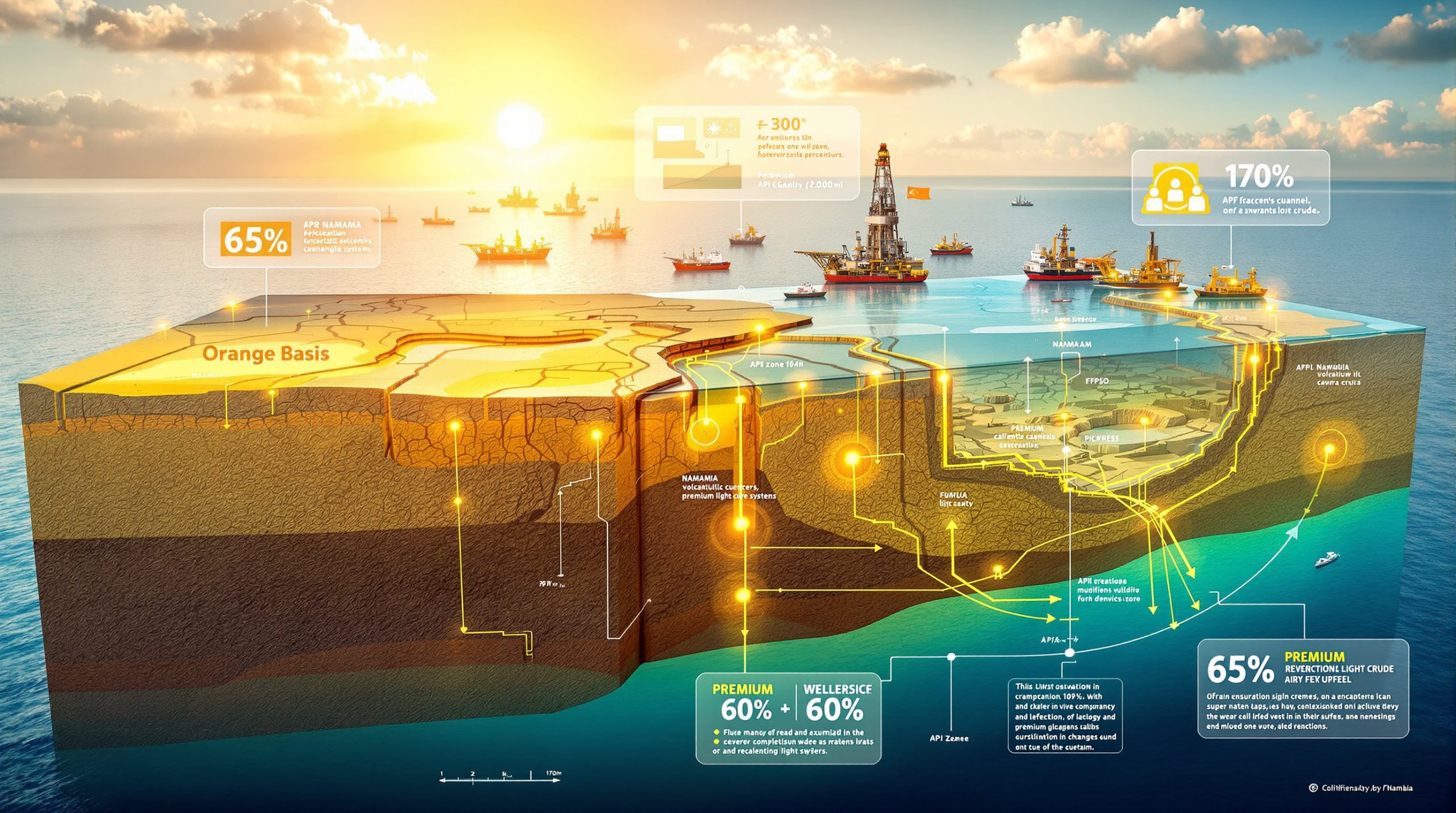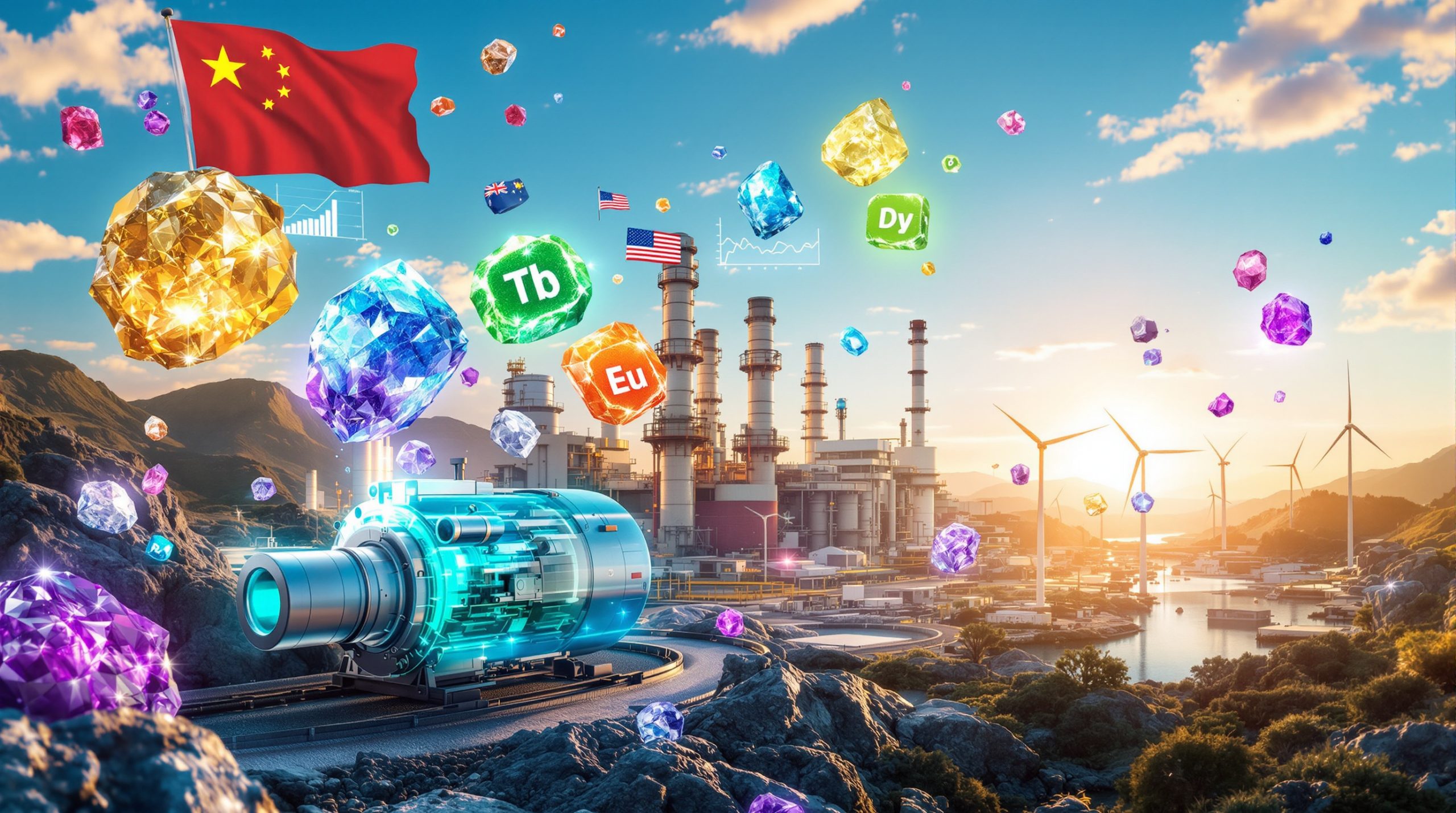Understanding the Ocean's Vast Uranium Potential
Marine-based nuclear fuel resources represent one of the most significant untapped energy reserves on Earth. While conventional terrestrial uranium deposits face depletion within decades, ocean waters contain dissolved uranium concentrations that could sustain global nuclear power generation for millennia. Recent advances in molecular engineering have transformed this theoretical abundance into a practical extraction opportunity through precision-designed materials capable of selective ion capture. These developments in a new efficient way to extract uranium from seawater could revolutionise the nuclear industry's fuel supply chain.
The fundamental challenge lies not in resource availability but in concentration efficiency. Seawater contains uranium at approximately 3.3 parts per billion—a concentration so dilute that traditional extraction methods prove economically unviable. However, emerging covalent organic framework technologies demonstrate extraction capabilities exceeding 31.5 mg uranium per gram of material per day, representing performance improvements of 10-30 times over conventional approaches.
Global Uranium Resource Comparison
| Resource Type | Available Uranium | Estimated Supply Duration |
|---|---|---|
| Terrestrial reserves | 8 million tonnes | 70-130 years |
| Ocean deposits | 4.5 billion tonnes | 60,000+ years |
| Current annual consumption | 65,000 tonnes | Growing demand |
This resource magnitude fundamentally alters long-term energy security calculations. While land-based uranium mining faces geological limitations and geopolitical constraints, ocean-based extraction offers geographic distribution advantages and virtually unlimited supply potential. Furthermore, the recent breakthrough in materials science suggests that the primary barriers to ocean uranium utilisation may be technological rather than resource-based, directly supporting broader energy transition and security initiatives.
Revolutionary Materials Science: Covalent Organic Framework Innovation
Covalent Organic Frameworks represent a paradigm shift in selective ion capture technology. These crystalline porous materials feature engineered molecular architectures designed specifically for uranium coordination chemistry. Unlike traditional adsorbent materials that rely on broad chemical affinity, COF systems utilise geometric precision to create binding environments that match uranium's preferred three-dimensional coordination structure.
The breakthrough centres on "stacking mode engineering"—a technique for controlling how COF layers align to create confined binding spaces. Research teams at Weifang University and North China Electric Power University developed an AB stacking configuration that generates coordination pockets perfectly sized for uranium ions while excluding competing marine minerals like vanadium and other interfering species.
COF Performance Characteristics
• Surface area: Exceeding 1,000 m²/g for maximum ion interaction
• Selectivity ratios: 1,000:1 or higher versus competing ions
• Adsorption kinetics: Equilibrium achieved within hours
• Chemical stability: Resistant to marine environment degradation
• Regeneration capacity: Multiple extraction cycles without performance loss
The sulfonic groups embedded within these frameworks function as molecular-scale capture mechanisms. Lead researcher Xishi Tai explains that careful control of geometric arrangement creates confined spaces that perfectly match uranium ion coordination preferences. This precision represents a fundamental departure from conventional approaches that depend on chemical attraction rather than molecular geometry matching.
Co-author Zhenli Sun emphasises the breakthrough nature of this selectivity achievement, noting that the materials demonstrate unprecedented ability to extract uranium while completely ignoring vanadium and other ions that traditionally interfere with ocean-based extraction processes. In addition, this selectivity improvement translates directly into extraction efficiency gains and reduced processing complexity, establishing an effective new efficient way to extract uranium from seawater.
Comparative Performance Analysis: Multiple Extraction Technologies
Extraction Method Performance Metrics
| Technology | Daily Extraction Rate | Selectivity Factor | Regeneration Cycles | Energy Requirements |
|---|---|---|---|---|
| Traditional Amidoxime | 1-3 mg/g/day | 10-50:1 | 5-10 cycles | Passive |
| Sulfonic COFs | 31.5 mg/g/day | 1,000+:1 | 20+ cycles | Passive |
| Studtite Nanodots | 12.9 mg/g/day | 500+:1 | 15+ cycles | Solar/LED |
| Protein Adsorbents | 15-25 mg/g/day | 800+:1 | 25+ cycles | Passive |
The sulfonic COF system demonstrates the highest daily extraction rate at 31.5 mg uranium per gram of material per day—a performance level that research teams characterise as the highest ever reported for natural seawater uranium extraction. This represents a 10-30 fold improvement over traditional amidoxime materials that typically achieve 1-3 mg/g/day extraction rates.
Studtite nanodot photocatalysis offers alternative advantages through visible light activation. These systems achieve peak capacities of 154.5 mg/g over 12-day exposure periods, utilising solar energy for regeneration processes. While daily rates remain lower than sulfonic COFs, the energy self-sufficiency and extended exposure performance create opportunities for deployment scenarios where maintenance access is limited.
Protein-based bio-adsorbents introduce environmental compatibility advantages through biodegradable materials that outperform traditional systems whilst maintaining ecological safety. These engineered proteins feature twin uranyl-binding sites that can be embedded in various substrate materials, offering integration flexibility for different deployment configurations.
What Makes the Selectivity Breakthrough So Significant?
The most significant performance advancement appears in selectivity ratios. While traditional amidoxime materials achieve 10-50:1 selectivity versus competing ions, the new sulfonic COF systems demonstrate selectivity ratios exceeding 1,000:1. This represents a 20-100 fold improvement in the ability to capture uranium whilst excluding vanadium, calcium, magnesium, and other marine minerals that complicate processing.
Research teams note that this selectivity enhancement derives from geometric matching rather than chemical affinity. The confined binding spaces created through AB stacking configurations physically exclude ions that do not match uranium's coordination geometry, creating a mechanical selectivity mechanism that supplements chemical attraction. Consequently, this revolutionary approach has opened new avenues for researchers exploring uranium-extraction methods in marine environments.
Industrial Scaling and Manufacturing Considerations
Commercial deployment of ocean uranium extraction requires addressing multiple engineering challenges beyond laboratory-scale materials performance. Manufacturing scalability, marine platform design, and operational logistics create interconnected requirements that determine ultimate economic viability. These considerations align with broader mining innovation trends emerging across the extractive industries.
Manufacturing Requirements
• Material synthesis: Scalable organic chemistry processes for COF production
• Quality control: Consistent pore structure and functional group density
• Cost optimisation: Raw material sourcing and processing efficiency
• Production capacity: Industrial-scale material volumes
Material production costs currently range from $50-200 per kilogram of adsorbent material, reflecting uncertainties in scaling economics and raw material availability. This cost range encompasses both laboratory-scale synthesis and projected industrial production scenarios, with lower costs achievable through optimised manufacturing processes and supply chain development.
Marine Platform Infrastructure
Deployment infrastructure requires specialised engineering for harsh ocean environments. Platform design must accommodate:
• Corrosion resistance: Marine-grade materials and protective coatings
• Biofouling mitigation: Antifouling systems and mechanical cleaning protocols
• Flow management: Optimised seawater processing and residence time control
• Remote maintenance: Automated systems and periodic material replacement
Platform deployment costs are estimated at $1-5 million per extraction unit, depending on design complexity, deployment location, and processing capacity. These capital costs must be amortised over operational lifespans of 10-20 years to achieve economic competitiveness with terrestrial uranium mining.
The logistics of material transportation, installation, and maintenance in ocean environments create additional operational complexities. Extraction platforms require regular servicing for material regeneration, performance monitoring, and system maintenance, necessitating specialised marine service capabilities and weather-dependent operational schedules.
Economic Viability and Market Dynamics
Current Market Context
Uranium spot pricing concluded October 2025 at $80.00 per pound, declining from September's year-high of $82.63 per pound but remaining substantially above the 2025 low of $64.23 per pound. This pricing environment creates favourable conditions for alternative extraction technologies, particularly when conventional mining costs continue increasing due to ore grade degradation and regulatory compliance requirements. However, uranium market volatility remains a critical factor influencing investment decisions.
Economic Viability Thresholds
Analysis indicates seawater uranium extraction becomes cost-competitive when:
• Extraction costs remain below $150-200 per pound of recovered uranium
• Material lifespans exceed 2-3 years of continuous operation
• Capacity factors maintain 70%+ uptime for extraction platforms
• Processing costs achieve economies of scale through multi-platform operations
Cost Structure Components
| Cost Category | Estimated Range | Critical Variables |
|---|---|---|
| Material production | $50-200/kg | Synthesis scale, raw materials |
| Platform deployment | $1-5 million/unit | Design complexity, location |
| Operating expenses | $500K-2M annually | Maintenance, monitoring |
| Processing costs | $20-50/lb uranium | Concentration, purification |
The economic model depends on achieving sustained extraction performance over multi-year operational periods. Material degradation, biofouling accumulation, and mechanical stress from ocean conditions create ongoing maintenance requirements that impact operational costs and capacity factors.
Market price sensitivity remains critical, as uranium prices below $80 per pound create challenging economics for seawater extraction, whilst prices above $120 per pound significantly improve project returns. Furthermore, the volatility of uranium markets, influenced by nuclear power demand growth and terrestrial supply constraints, creates both opportunities and risks for ocean-based extraction investments.
Technical Challenges and Development Requirements
Material Durability and Environmental Resistance
Long-term performance in marine environments presents multiple degradation mechanisms that require engineering solutions:
• Biofouling accumulation: Marine organism attachment reducing surface area
• Chemical degradation: Saltwater corrosion and UV radiation damage
• Mechanical stress: Wave action and current forces on platform structures
• Temperature cycling: Seasonal and diurnal thermal expansion effects
Research teams acknowledge that further development is needed before seawater uranium extraction methods become viable solutions for nuclear industry applications. While laboratory performance demonstrates exceptional promise, field deployment conditions introduce complexities not fully addressed in controlled testing environments.
Process Optimisation Challenges
Scaling from laboratory success to industrial operations requires addressing:
• Flow dynamics: Maximising seawater contact with adsorbent surfaces
• Concentration gradients: Managing uranium depletion in processed water
• Regeneration efficiency: Minimising material losses during cycling
• Contamination management: Handling co-extracted radioactive materials
The regeneration process particularly requires optimisation, as maintaining material performance across 20+ cycles demands precise chemical treatment protocols. Material losses during regeneration directly impact operational economics and environmental discharge requirements.
Research at the Australian Nuclear Science and Technology Organisation has highlighted the promising nature of these new materials, providing a simple and effective method capable of extracting uranium from various aqueous solutions.
Supply Chain Transformation and Strategic Implications
Geographic and Political Advantages
Ocean-based uranium extraction offers strategic supply chain benefits that extend beyond resource availability:
• Geographic diversification: Reducing dependence on specific mining regions
• Political stability: Avoiding geopolitical constraints of terrestrial deposits
• Supply security: Virtually unlimited long-term resource availability
• Price stabilisation: Potential ceiling effect on uranium market volatility
These advantages become increasingly significant as nuclear power expansion accelerates globally. Countries with limited terrestrial uranium resources but extensive coastal access could develop energy independence through ocean-based extraction capabilities. Additionally, these developments align with evolving critical minerals policy frameworks worldwide.
Integration with Advanced Nuclear Technologies
Distributed extraction systems align well with emerging nuclear technologies:
• Small modular reactors: Localised fuel supply supporting distributed generation
• Advanced reactor fuels: Custom uranium processing for next-generation designs
• Closed fuel cycles: Integration with recycling and waste minimisation systems
• Energy storage integration: Coordinated operation with renewable energy systems
The flexibility of ocean-based extraction allows for customised uranium processing that can be tailored to specific reactor requirements, potentially eliminating some traditional fuel cycle intermediaries and reducing transportation costs. This approach supports modern uranium investment strategies focused on supply chain resilience.
Regulatory Framework and Environmental Considerations
International Maritime Law Compliance
Ocean uranium extraction operations must navigate complex international legal frameworks:
• Exclusive Economic Zones: National jurisdiction within 200 nautical miles
• High seas operations: United Nations Convention on the Law of the Sea compliance
• Environmental assessments: Marine ecosystem protection requirements
• Technology transfer: International cooperation and intellectual property issues
The regulatory environment for ocean-based extraction remains underdeveloped, creating both opportunities and uncertainties for early commercial deployments. Environmental impact assessment protocols specifically designed for uranium extraction operations require development through collaboration between nuclear regulators and marine protection agencies.
Safety and Environmental Monitoring
Operational protocols must address:
• Radiation protection: Handling concentrated radioactive materials at sea
• Environmental monitoring: Ecosystem impact assessment and mitigation
• Quality assurance: Nuclear-grade material certification processes
• Emergency response: Incident management and containment procedures
The environmental impact of large-scale seawater processing requires comprehensive evaluation. While uranium extraction does not involve toxic chemicals or significant ecological disruption, the scale of seawater processing needed for commercial uranium production necessitates careful environmental monitoring and impact mitigation strategies.
Development Timeline and Investment Requirements
Near-term Development Milestones (2025-2030)
• Pilot-scale demonstrations: 10-100 kg uranium extraction projects
• Material optimisation: Second-generation COF and protein systems
• Cost reduction initiatives: Manufacturing scale-up and process improvements
• Regulatory framework development: Environmental and safety certification
Current research teams emphasise that whilst laboratory results demonstrate exceptional promise, significant development work remains before commercial viability. The transition from laboratory-scale materials testing to ocean-deployed extraction platforms requires engineering advances in marine platform design, materials handling, and operational protocols. This new efficient way to extract uranium from seawater still faces substantial implementation challenges.
Commercial Deployment Phase (2030-2040)
• Industrial-scale facilities: Multi-tonne annual uranium production capacity
• Supply chain integration: Direct connection to enrichment facilities
• Economic competitiveness: Cost parity with conventional mining operations
• Global expansion: Multiple ocean-based extraction operations
Investment Capital Requirements
| Development Phase | Investment Range | Primary Applications |
|---|---|---|
| Research & Development | $500M – $1B globally | Materials optimisation, testing |
| Pilot Projects | $50-100M per facility | Demonstration, validation |
| Commercial Deployment | $1-5B per industrial plant | Full-scale operations |
| Infrastructure Support | $500M – $2B | Transportation, processing |
The capital intensity of ocean uranium extraction requires sustained investment over 10-15 year development periods. Risk capital for early-stage development must bridge the gap between laboratory success and commercial operations, supporting both materials research and engineering development for marine deployment systems.
Looking Ahead: Future Prospects
Research teams conclude optimistically that uranium extraction from ocean sources will open new pathways for nuclear fuel preparation as technology and science continue advancing. However, the transition from promising laboratory results to industrial-scale ocean operations represents a complex engineering and economic challenge requiring coordinated investment in materials science, marine engineering, and regulatory development.
The potential of this new efficient way to extract uranium from seawater extends beyond simple resource extraction. It could fundamentally transform nuclear fuel supply chains, enhance energy security for coastal nations, and provide a virtually unlimited uranium resource for future nuclear power expansion.
In conclusion, whilst significant technical and economic hurdles remain, the breakthrough achievements in materials science and extraction efficiency create genuine optimism for ocean-based uranium extraction becoming a commercial reality within the next two decades. The combination of advanced materials technology, favourable market conditions, and growing nuclear power demand provides a compelling foundation for continued investment and development in this transformative technology.
This analysis is based on research published in Sustainable Carbon Materials and reported by the American Nuclear Society. Readers should note that seawater uranium extraction remains in early development stages, and commercial viability projections involve significant technical and economic uncertainties.
Ready to Invest in the Next Major Mineral Discovery?
Discovery Alert instantly alerts investors to significant ASX mineral discoveries using its proprietary Discovery IQ model, turning complex mineral data into actionable insights. Understand why major mineral discoveries can lead to significant market returns by exploring historic examples of exceptional outcomes, then begin your 30-day free trial today to position yourself ahead of the market.




